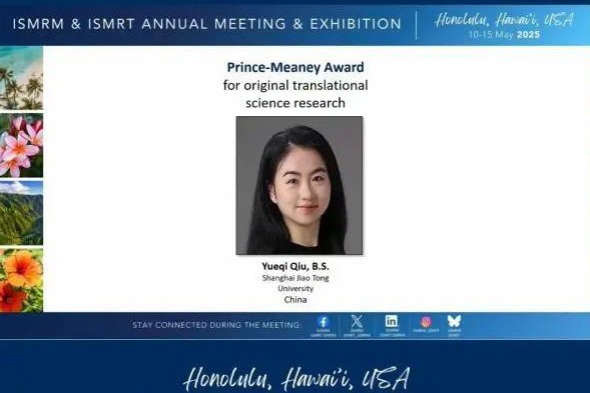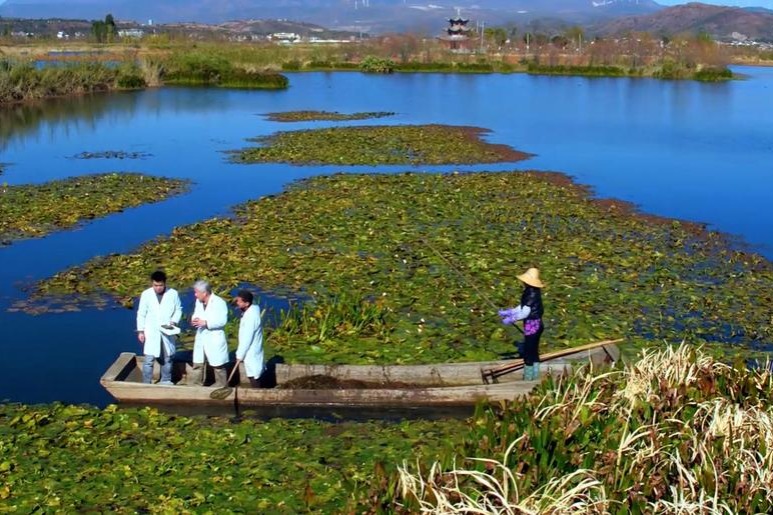Unified measures drive successful conservation


In a bid to safeguard its breathtaking landscapes and rich biodiversity, the Wuyishan National Park, which straddles the provinces of Jiangxi and Fujian in East China, has taken significant strides toward integrated conservation and management efforts.
As one of China's first five national parks, Wuyishan has been strictly protected to preserve its natural treasures and cultural relics. It has been included in both the UNESCO World Cultural Heritage List and the World Natural Heritage List.
The Tongmu checkpoint, one of the eight passes on Mount Wuyi, has become a popular gateway to the park's main peak, Huanggang Mountain. Tourists and travelers flock to this special cross-provincial gate, capturing its magnificent cliffs and unique geographical features in photos, thus making it a trending destination on a number of social media platforms.
However, beyond the allure of the Tongmu checkpoint, visitors are greeted by a large sign at the gate tower that emphasizes the sanctity of the core conservation area via a notice that reads, "No one is allowed to enter the core area of the nature reserve without permission."
To ascend the majestic Huanggang peak, visitors must undergo the strict process of obtaining approval from both the Fujian and Jiangxi authorities at the Tongmu checkpoint, which means anyone who wants to venture deeper into the park needs to open two "locks" at the checkpoint — one from Fujian and one from Jiangxi.
Zhong Gaowang, a staff member at the Tongmu checkpoint, shared insights into the process.
"Visitors need to sign a safety waiver here before entering Huanggang Mountain and then proceed to the checkpoint in Jiangxi to register personnel and vehicle information. After completing the formalities, we will unlock the railings and allow you to pass through," he said.
Zhong's office building sits beside that of the Tongmu Protection Station for Jiangxi. The arrangement makes him a close neighbor of the staff members from Jiangxi because the job requires them to live and sleep in the station for long periods.
The integration of protection efforts is evident in the collaboration between the two stations, and the approach leverages resources from different provincial prefectures to ensure a holistic conservation strategy.
In 2016, China initiated the establishment of 10 pilot projects for the national park system, including the Wuyishan National Park. The move was aimed at exploring effective ways of managing the park's environmental and cultural resources. The transformation from the previous system of governance — referred to locally as jiu long zhi shui or "Nine dragons managing the waters together" — to an integrated approach brought about significant changes.
Local governments and a number of administrative departments, such as forestry and water resources, now work together to put forward unified measures for the park's protection.
In 2017, the Wuyishan National Park Management Bureau was established as the governing body responsible for the unified management of natural resources and land use within the area. This cohesive approach ensures streamlined management without the need to alter the administrative boundaries.
"Since the founding of the Wuyishan National Park, we have been called the park's Fujian division and they are the Jiangxi division. We are a unified entity, divided into two branches," said Huang Zhimin, a researcher with the management bureau.
"The National Park Administration holds a meeting with the two provincial governments every six months. At the provincial level, there are regular joint meetings held for the Fujian division of the Wuyishan National Park, participants come from more than 10 departments and bureaus, as well as key officials from five surrounding counties and cities."
To standardize and normalize conservation efforts, several guidelines and disciplines have been implemented, outlining clear responsibilities among different management bodies.
The park, which covers approximately 128,000 hectares and is home to more than 10,000 species of flora and fauna, is a testament to the success of concerted protection efforts.
As the park continues to attract visitors from around the world, the authorities remain committed to maintaining harmony and green development for the well-being of the environment and future generations.
- China strives to build South China Sea into a sea of peace, friendship, cooperation
- Xi, Myanmar leader exchange congratulations on 75th anniversary of diplomatic ties
- Why Guangdong-Hong Kong-Macao Greater Bay Area is a must-watch for global businesses
- Hefei mobilizes public to build spiritual civilization
- Experts urge stronger civil aviation legislation, cultivation of legal talents
- Henry C. Lee praises women's rising role in forensic science





































